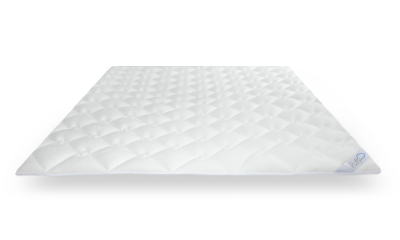Sleep is an indispensable part of our lives, and the quality of our slumber is heavily influenced by the comfort and longevity of our beds. As we constantly seek ways to enhance our sleep environment, two bedding accessories often enter the discussion: mattress pads and mattress protectors. While these terms may seem interchangeable, they serve distinct purposes and provide different benefits.
In this comprehensive guide, we will unravel the mysteries surrounding mattress pads and protectors, delineating their differences, advantages, and how to make an informed decision when choosing the right one for your needs. Additionally, we will discuss how to optimize these bedding accessories to help you achieve the ultimate sleeping experience. So, buckle up and get ready to dive into the world of mattress pads and protectors!
What is a Mattress Pad?
Definition and Purpose
A mattress pad is a thick, cushioned layer designed to be placed on top of your mattress. It adds an extra layer of comfort, helping enhance the overall feel of your bed. Mattress pads are often used to improve the softness of a firm mattress or to refresh an older one that may be showing signs of wear and tear.
Types and Materials
There are various types of mattress pads available in the market, each made from different materials to suit individual preferences. Some common materials include memory foam, latex, down, and cotton. Memory foam and latex mattress pads are known for their pressure-relief and body-contouring properties, while down and cotton pads provide a plush, soft surface for added comfort.
What is a Mattress Protector?
Definition and Purpose
A mattress protector, on the other hand, is a thin, fitted sheet designed to cover your mattress and safeguard it from various external factors. It acts as a barrier against liquids, allergens, dust mites, and other potential hazards that can compromise the quality and longevity of your mattress. Unlike mattress pads, mattress protectors are not intended to alter the feel or comfort of your bed.
Types and Materials
Mattress protectors come in a variety of materials, such as vinyl, polyurethane, and cotton. The choice of material largely depends on your specific needs and concerns. For example, vinyl and polyurethane protectors offer excellent waterproof protection, making them ideal for those with allergies or incontinence issues. On the other hand, cotton protectors are breathable and can help regulate temperature during sleep, although they may not provide the same level of waterproof protection.
Mattress Pad vs Mattress Protector: Key Differences
Now that we've established the definitions and purposes of mattress pads and protectors let's highlight their key differences:
- Comfort Enhancement: Mattress pads focus on improving the comfort of your bed, while mattress protectors prioritize protection.
- Thickness: Mattress pads are thicker and can change the feel of your bed, whereas mattress protectors are thin and have little to no impact on comfort.
- Waterproofing: Mattress protectors generally offer better waterproof protection compared to mattress pads, although some pads may have water-resistant features.
- Allergen Protection: Mattress protectors are more effective in guarding against allergens and dust mites, as they create a barrier between the mattress and external elements.
How to Choose the Right Sleep Accessory for Your Bed
When deciding between a mattress pad and a mattress protector, consider your unique sleep needs and preferences:
- If you're looking to improve the comfort and feel of your bed, a mattress pad may be the right choice.
- If your primary concern is protecting your mattress from spills, stains, allergens, or dust mites, a mattress protector might be a better option.
- If you require both added comfort and protection, consider investing in both a mattress pad and a mattress protector. This combination allows you to enjoy the best of both worlds, with enhanced comfort and maximum protection for your mattress.
- Be sure to consider your specific requirements, such as allergies, incontinence issues, or temperature regulation needs. For example, if you're an allergy sufferer, a hypoallergenic mattress protector with waterproof capabilities is essential.
- Don't forget to take the material and quality of the mattress pad or protector into account. Opt for high-quality, durable materials that suit your personal preferences and sleeping habits.
Caring for Your Mattress Pad and Protector
Proper care and maintenance of your mattress pad and protector are crucial to ensuring they remain effective and prolong their lifespan. Follow these tips for optimal care:
- Always adhere to the care instructions provided by the manufacturer. Different materials may require specific care methods, such as hand washing or dry cleaning.
- Regularly launder your mattress protector to maintain its effectiveness against allergens and dust mites. Most protectors can be machine washed and dried, making for easy maintenance.
- Rotate and flip your mattress pad periodically to promote even wear and prevent indentations or sagging.
- If your mattress pad or protector becomes damaged, consider replacing it to maintain optimal comfort and protection for your bed.
Conclusion
In the end, the decision between a mattress pad and a mattress protector boils down to your individual needs and priorities. A mattress pad is ideal for those seeking additional comfort, while a mattress protector provides essential protection for your mattress.
By understanding the key differences between these sleep accessories and considering your unique requirements, you can make an informed choice and optimize your sleep experience for years to come.

- Fitted, elasticated design.
- Oeko-Tex® Standard 100 certified.
- Breathable and hypoallergenic.
- Lifetime warranty.
- 101-night sleep trial.
- Free shipping and returns.












